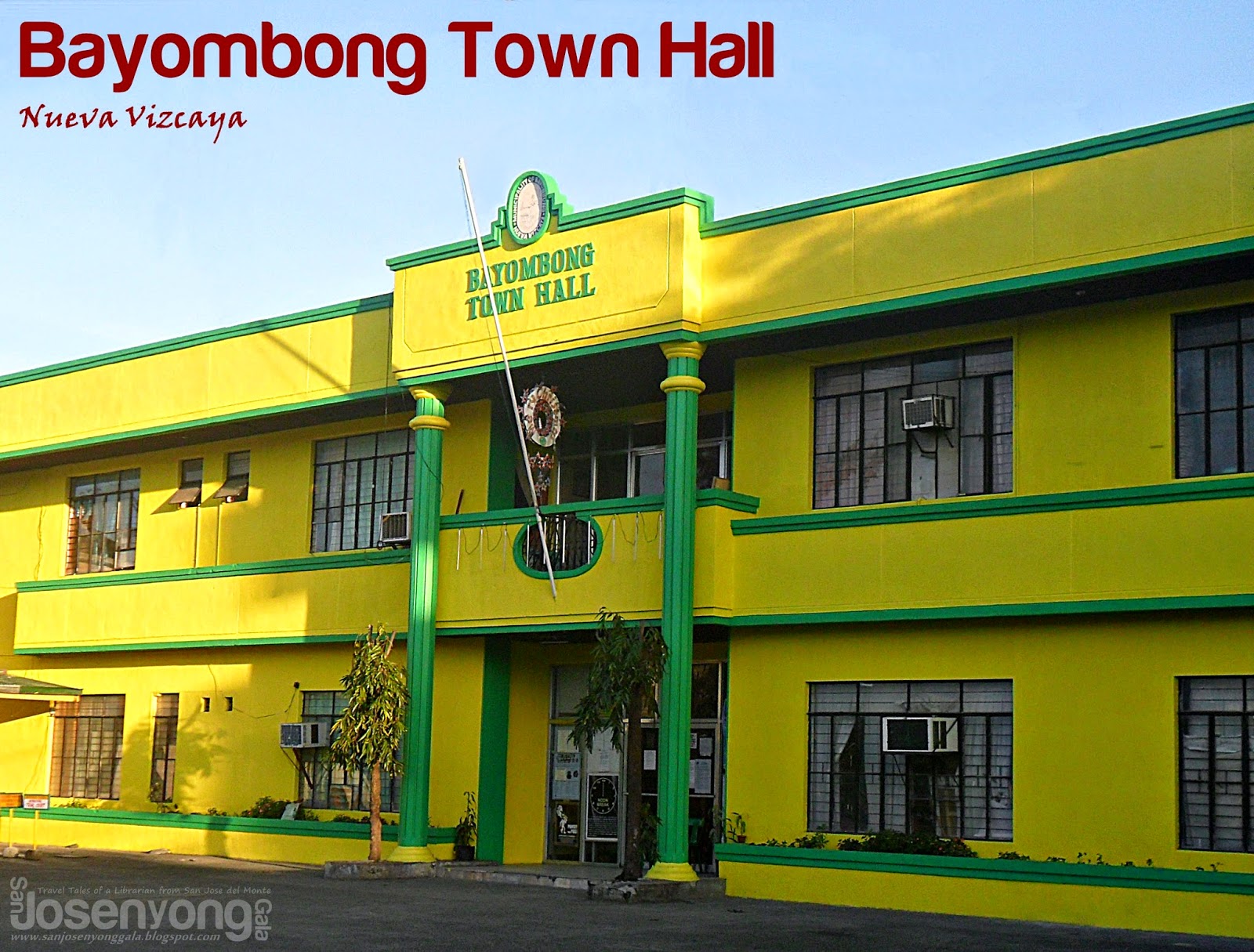 |
| Nueva Vizcaya People's Museum and Library. Bayombong. |
The name of the town came from the Gaddang word, bayongyong, a place name referring to a meeting place of two or more rivers (Gaddangs are one of the earliest settlers in Bayombong and many other parts of Nueva Vizcaya). It is also one of the earliest towns to be founded (1739), even predating the foundation of the province that has the present jurisdiction over it for a full century (Nueva Vizcaya, 1839)!
 |
| Bayombong Cathedral |
Aside from the capitol complex, one major tourist draw of Bayombong is its Spanish-era church which functions as the seat of the Diocese of Bayombong, the Bayombong Cathedral. The said diocese serves the spiritual needs of the whole population of the province of Nueva Vizcaya as well as of the province of Quirino.
Bayombong Church was first dedicated to St. Augustine by the Augustinians but when they ceded the church to the Dominicans, it was rededicated to St. Dominic De Guzman in 1739. The construction of the stone church started in 1773 and since then, many reconstruction, restoration and addition to different parts of church were made. It became a cathedral in 1966 when Bayombong became a territorial prelature. Finally, Bayombong was elevated into a diocese in 1982, a suffragan of the Archdiocese of Tuguegarao, and the church became a full pledged cathedral. Today, though the facade of the church retains its old look, the interior is very much modern looking.
Another interesting landmark to be visited in the town of Bayombong is the People's Museum and Library, better known as the Nueva Vizcaya Museum. The building itself is already a museum exhibit because it has an architecture prevalent in the time before this generation. The museum is actually the old provincial capitol of Nueva Vizcaya, and that adds to its historicity and importance. I was able to visit this museum during both my 2013 and 2015 visits but I still wasn't able to have a look at its museum and library. In 2013, I arrived late and the museum is already closed while in 2015, an exhibit is currently being prepared so we were not allowed to have a tour inside.

Numerous old houses are also scattered around the town (of which two are pictured above). Some of them are in derelict condition while some are already restored and well-maintained. The last landmark one can visit in Bayombong is its town hall located some meters away from the cathedral. One can walk to reach it or ride a tricycle, which is more convenient. I visited this town hall in 2013.
After seeing what is there to see in Bayombong, I continued my trip, now to another interesting Nueva Vizcayan town south, Bambang.
HOW TO GET THERE?
Interior of Bayombong Cathedral
|
 |
| Rear part of the Nueva Vizcaya Museum |

 |
 |
| Bayombong Municipal Hall |
HOW TO GET THERE?
From Cubao, you can ride Florida, Five Star or other buses bound to Tuguegarao or Ilagan. Just tell the driver to drop you off at Bayombong Junction. From the junction, you may ride a tricycle to bring you to the capitol complex. You may also opt to walk to the capitol if you have ample time and stamina. Just ask around how to get there.
If you are coming from Tuguegarao or any town north of Nueva Vizcaya, you may ride any bus bound to Manila/Cubao and tell the driver to drop you off at Bayombong Junction and follow the directions above.
I visited Bayombong both in 2013 and 2015.
****************************************
To see more of Nueva Vizcaya, you may visit the following links:


No comments:
Post a Comment